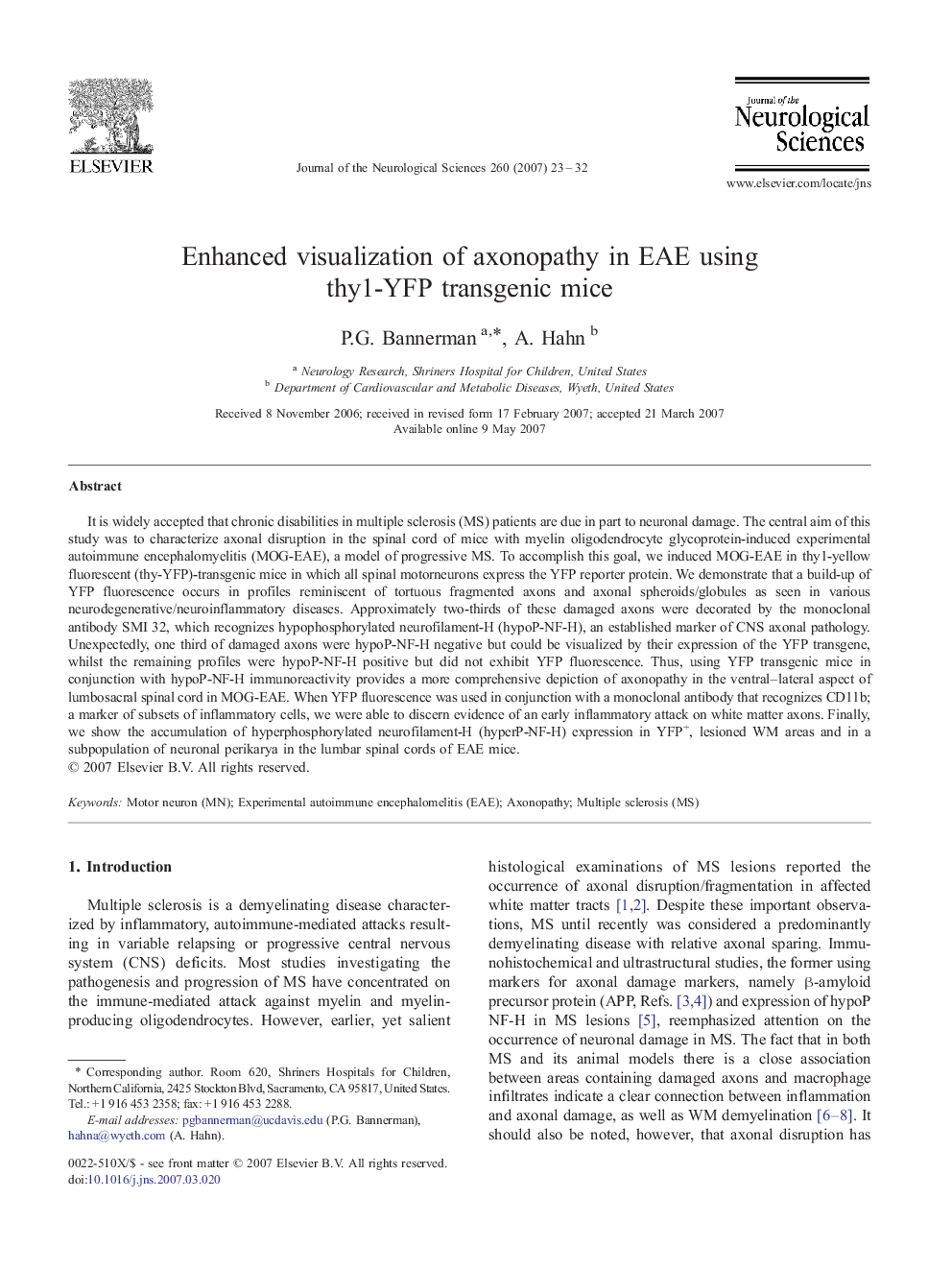| Article ID | Journal | Published Year | Pages | File Type |
|---|---|---|---|---|
| 1916096 | Journal of the Neurological Sciences | 2007 | 10 Pages |
Abstract
It is widely accepted that chronic disabilities in multiple sclerosis (MS) patients are due in part to neuronal damage. The central aim of this study was to characterize axonal disruption in the spinal cord of mice with myelin oligodendrocyte glycoprotein-induced experimental autoimmune encephalomyelitis (MOG-EAE), a model of progressive MS. To accomplish this goal, we induced MOG-EAE in thy1-yellow fluorescent (thy-YFP)-transgenic mice in which all spinal motorneurons express the YFP reporter protein. We demonstrate that a build-up of YFP fluorescence occurs in profiles reminiscent of tortuous fragmented axons and axonal spheroids/globules as seen in various neurodegenerative/neuroinflammatory diseases. Approximately two-thirds of these damaged axons were decorated by the monoclonal antibody SMI 32, which recognizes hypophosphorylated neurofilament-H (hypoP-NF-H), an established marker of CNS axonal pathology. Unexpectedly, one third of damaged axons were hypoP-NF-H negative but could be visualized by their expression of the YFP transgene, whilst the remaining profiles were hypoP-NF-H positive but did not exhibit YFP fluorescence. Thus, using YFP transgenic mice in conjunction with hypoP-NF-H immunoreactivity provides a more comprehensive depiction of axonopathy in the ventral-lateral aspect of lumbosacral spinal cord in MOG-EAE. When YFP fluorescence was used in conjunction with a monoclonal antibody that recognizes CD11b; a marker of subsets of inflammatory cells, we were able to discern evidence of an early inflammatory attack on white matter axons. Finally, we show the accumulation of hyperphosphorylated neurofilament-H (hyperP-NF-H) expression in YFP+, lesioned WM areas and in a subpopulation of neuronal perikarya in the lumbar spinal cords of EAE mice.
Keywords
Related Topics
Life Sciences
Biochemistry, Genetics and Molecular Biology
Ageing
Authors
P.G. Bannerman, A. Hahn,
